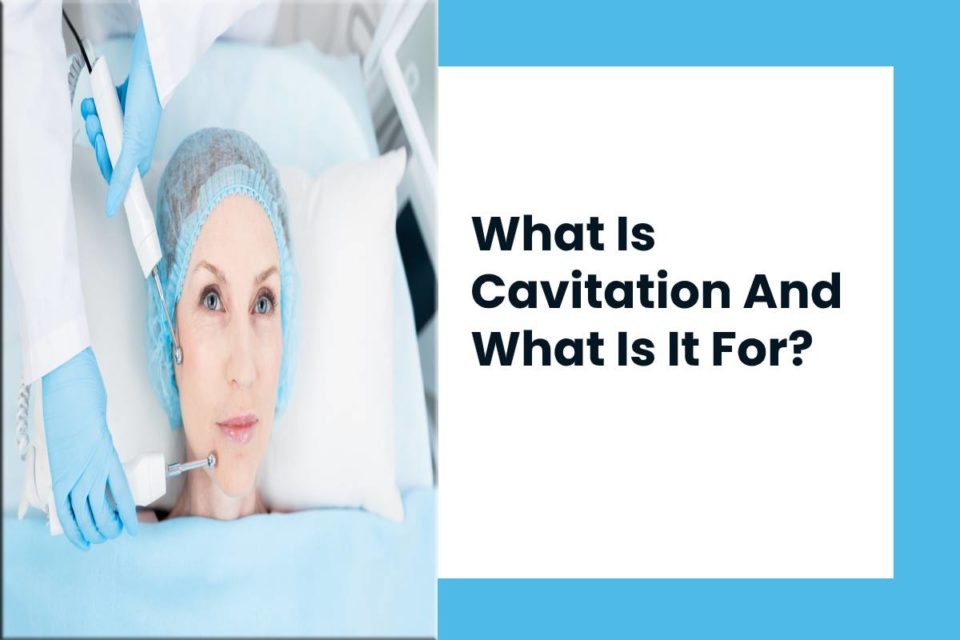Table of Contents
What Is Cavitation?
Cavitation is a liposuction technique that does not require surgical intervention, anesthesia, or hospitalization. Besides it is perfect for people who want to shape their looks. What is it? Discover!
The cavity is a beauty treatment that continues to attract attention, especially to female audiences.
Mainly, it is considered an alternative to liposuction. However, this is not an approach to weight loss to create an image. What is it? Find out.
These non-invasive sessions use tools that reduce localized fat and cellulite.
Its cost associated with surgical liposuction is more accessible, and the person can resume his normal activities without problems. Later, we will tell you more about this.
Mechanism Of Action Of Cavitation
Cavitation is a mechanical phenomenon generated by high intensity and low energy frequency.
These waves pass through biological tissues and generate cavities or “microbubbles,” which grow to a size that leads them to implode.
This, in addition to causing the cell to burst, also leads to the breakdown of the large molecules that make it up, that is, the fats that contained in adipocytes in the form of triglycerides.
They divided into fatty acids and glycerol by the action of lipase enzymes.
A study published in the Journal of Cosmetic Surgery shows that byproducts of these adipocytes are absorbed and removed by physiological pathways, so there is no chance of a heart attack.
Cavitation is striking as a non-invasive alternative to surgical liposuction. It used to mold the figure.
Uses Of Cavitation
Currently, the use of this technique is not only for aesthetic purposes but also for medical purposes.
The time allocated to each work area is 10 to 15 minutes, and only one field performed per session (buttocks, abdomen, internal or external area of the leg). This treatment indicated for the following:
- Reduction of localized fat.
- Cellulite decrease.
- Reabsorption of edema (those that are high in protein).
- Hematoma disorganization.
- Decreased fibrosis in hypertrophic scars and fibrotic areas.
What Benefits Does Cavitation Have?

Cavitation is a technique that helps on an aesthetic level, accompanied by many other benefits linked to health.
This is a non-invasive technique, which does not cause pain, which provides exciting results when accompanied by proper nutrition and physical exercise.
- It is a treatment for both men and women.
- This intended for all skin types.
- Also is one of the most attractive options for those who want to shape their figure.
- It offers advantages over surgical liposuction, which is more complicated, more expensive, and carries more risks and post-surgical care.
The skin becomes more elastic, so this treatment is a good alternative in cases of abdominoplasty.
Boosts the results of liposuction by helping to tighten the skin naturally.
How Is The Procedure Performed?
Cavitation performed in 10 x 10 cm body areas and not recommended to treat more than two regions of this measurement in each session.
Since it does not produce local inflammation or edema, the reduction in volume can be measured after the session, although it will be maximum in 48 or 72 hours.
In clinical studies published in Lasers in Surgery and Medicine, it observed that the inside perimeter reduced from 1.3 to 2.5 centimeters in just one session. With 3 sessions, it cut from 2.3 to 3.5 centimeters.
It is usual for the skin in the treated area to appear erythematous and sometimes with small cysts. This resolves spontaneously in minutes.
At the end of the procedure, the patient leaves the office with a compression girdle or garment to favor the modeling of the area.
How Many Sessions Are Required?
Like all lipo-reducing treatment, cavitation requires a minimum number of 8 sessions.
As treatment proceeds, the care prescribed by the doctor must follow. The sessions held with an interval of 15 days.
Cavitation Contraindications
Cavitation is a treatment that almost any type of person can undergo, contrary to individual medical interventions that contraindicated for specific health problems.
Treatment not indicated in the following situations:
- Dyslipidemias.
- Pacemaker or underlying metal prosthesis.
- Skin allergies, infections, or active wounds.
- Pregnancy.
- Infraumbilical abdomen in patients with IUD.
In those areas where there is bone, near the anterior superior iliac spine, it should avoid so as not to cause wave reflection or future skin damage.
A study published in Seminars in Cutaneous Medicine and Surgery indicates this.
For most people, cavitation is a safe procedure. However, in exceptional cases, it not recommended. It is essential to consult with the doctor.
Post-Session Recommendations
After a lipolytic procedure, at least 30 minutes of physical activity (walking, treadmill, bicycle, vibrating platform, etc.) recommended increasing the effectiveness of the treatment.
This contributes to speeding up the metabolism of the triglycerides released and manages to prevent their reuptake by healthy adipocytes to reincorporate them in the fatty tissue.
A low-fat diet recommended during the days after treatment and the intake of plenty of fluids.
This will be decisive in preventing an unwanted accumulation of fat from reoccurring after the procedure.
The Importance Of Suitable Personnel
Due to the intensity of the results that the treatment can provoke, it must carry out with trained and authorized personnel. Cavitation cannot done by anyone, but by someone who specializes in the procedure.
It the doctor who establishes whether the person fit to carry out the treatment since he must healthy since the elimination of adipose cells through the liver.

